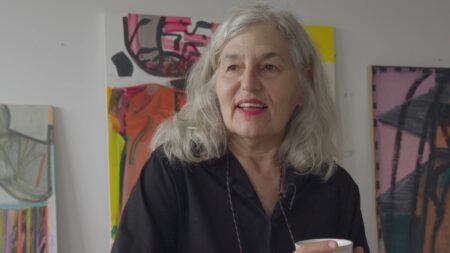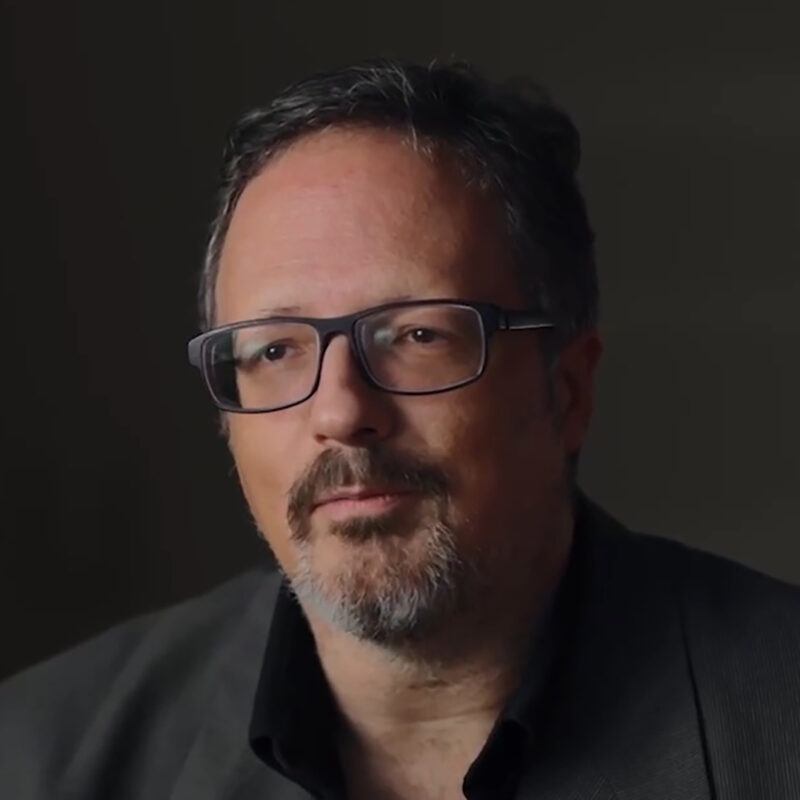Continue playing
(Time remaining: )
Play from beginning
Continue playing "{{ controller.videos[controller.getVideo(controller.currentVideo)].segmentParentTitle}}"
{{controller.videos[controller.getVideo(controller.currentVideo)].title}} has ended.
"A Crack in the Hourglass"Rafael Lozano-Hemmer
In the midst of loss and isolation, an artist’s anti-monument, “A Crack in the Hourglass” (2021), brings communities together to mourn, remember, and feel connected again.
Rafael Lozano-Hemmer is most interested in monuments that “disappear, question themselves, that complicate some of the stories that we tell ourselves.” This anti-monumental approach creates platforms for self-representation through large-scale participatory installations such as “A Crack in the Hourglass” (2021). Shown at the Brooklyn Museum in 2022, the artwork memorializes those lost to COVID-19. After hearing stories of families and friends unable to gather and grieve, Lozano-Hemmer and his studio team decided to “create a way for people to be able to come together and remember our loss.” Through custom software, a robotic arm, sand, and a live video feed, the artist has provided an opportunity for communities to experience an event which memorializes their loved ones. Anyone can submit a photograph to www.acrackinthehourglass.net and gather remotely or in-person to watch a portrait of a friend or family member be drawn by the artwork.
A single body of sand produces each of the hundreds of portraits over the course of the installation. After a portrait is complete, the image tilts and the sand slides away to be recycled. In the face of an invisible virus, Lozano-Hemmer hopes to build “a sense of universal solidarity” and connect the individuals depicted in the installation. “The ephemeral helps us remember,” states Lozano-Hemmer.
More information and creditsCredits
Series Producer: Ian Forster. Director: Ian Forster. Editor: Janah Elise Cox. Camera: Sebastián Lasaosa Rogers. Sound: David Hocs. Colorist: Jonah Greenstein. Sound Mix: Adam Boese. Music: Blue Dot Sessions. Artwork Courtesy: Rafael Lozano-Hemmer. Special Thanks: Lauren Bierly, Brooklyn Museum, Lozano-Hemmer Studio, Taylor Maatman, Hazen Mayo, Museo Universitario Arte Contemporáneo, Gabriel Rizzotti, Drew Sawyer, Harry Tinh, Milagros Verendia.
Extended Play is supported by The Andy Warhol Foundation for the Visual Arts; and, in part, by public funds from the New York City Department of Cultural Affairs in partnership with the City Council; the Art21 Contemporary Council; and by individual contributors.
Closed captionsAvailable in English, German, Romanian, Italian, Japanese, Korean, Chinese, Italian
Through the Art21 Translation Project, multilingual audiences from around the globe can contribute translations, making Art21 films more accessible worldwide. Translate this video now.
Interested in showing this film in an exhibition or public screening? To license this video please visit Licensing & Reproduction.
Rafael Lozano-Hemmer was born in Mexico City in 1967. An artist working at the intersection of architecture and performance art, Lozano-Hemmer creates participatory artworks that utilize technology like robotics, heart-rate sensors, and computerized surveillance tools in order to facilitate human connection. Technologically sophisticated yet deceptively simple in their execution, Lozano-Hemmer’s spectacular, immersive works are often installed in public places as a means of transforming these sites into forums for civic engagement.

